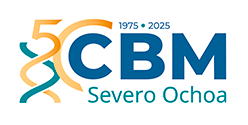Scientific Program
Physiological and pathological processes
RESEARCH GROUP
Functional glycogenomics

Pedro Bonay Miarons
Lorem ipsum dolor sit amet, consectetur adipiscing elit, sed do eiusmod tempor incididunt ut labore et dolore magna aliqua. Ut enim ad minim veniam, quis nostrud exercitation ullamco laboris nisi ut aliquip ex ea commodo consequat. Duis aute irure dolor in reprehenderit in voluptate velit esse cillum dolore eu fugiat nulla pariatur. Lorem ipsum dolor sit amet, consectetur adipiscing elit, sed do eiusmod tempor incididunt ut labore et dolore magna aliqua.
Lorem ipsum dolor sit amet, consectetur adipiscing elit, sed do eiusmod tempor incididunt ut labore et dolore magna aliqua.
Research
Glycosylation is the most abundant, diverse and dynamic post-translational modification in nature, generating one of the most complex biological molecules found in nature, the glycans. Those are covalent conjugates of an oligosaccharide to certain amino acid residues on the protein backbone, resulting in a plethora of glycoforms potentially exhibiting a wide spectrum of functional and biological proteins for a single gene product. Almost all secreted and membrane proteins are glycosylated; hence, nearly all plasma and serum proteins are glycoproteins. This co-translational modification widens the functional spectra of proteins by at least one magnitude order. Glycan biosynthesis is more significantly affected by disease states than by protein production. Glycomics, therefore hold considerable promise specifically as disease markers. The nonlinear and non-template-based biosynthesis of glycans makes a head-to-head comparison of glycomics to proteomics not technically possible, and a complex structural analysis of glycome is necessary to get a glycomic profile.
The group has devoted the last five years to assembling, implementing and validating a novel technological platform that allows us to analyze the N-glycome from minute amounts of biological samples: sera, plasma or tissues, unique at the UAM campus and second in Spain, and fourth in Europe behind Croatia and Ireland. The group has curated one of the largest collections of clinically well-characterized biological samples of American tripanosomiasis biological samples (around 5000), leishmaniasis visceral and Neurocisticercosis from all stages of the diseases, before and after chemotherapeutic treatment.
The glycomic evaluation of individuals (not populations) allows to establish associations to disease progression, therapeutic efficacy or failure and reinfections. The system has been used to analyze samples from three defined infectious diseases from which we have clinically defined cohorts (Chagas disease, Leishmaniasis and Neurocysticercosis). From our previous studies on total sera N-glycome we have moved to study the effector profile of human Immunoglobulin G derived from its glycosylation profile. By using this novel approach, we have been allowed to identify some molecular markers for efficacy during the treatment with Benznidazole for acute Chagas disease patients and able to discriminate the latent form active form of neurocysticercosis, previously only possible by using classical image systems like NMR or PET-TAC.
Group members

Pedro Bonay Miarons
Lab.: 408 Ext.: 4509
pbonay(at)cbm.csic.es
Selected publications
Title
Author et al.
Title
Authors
Title
Authors
Title
Authors




